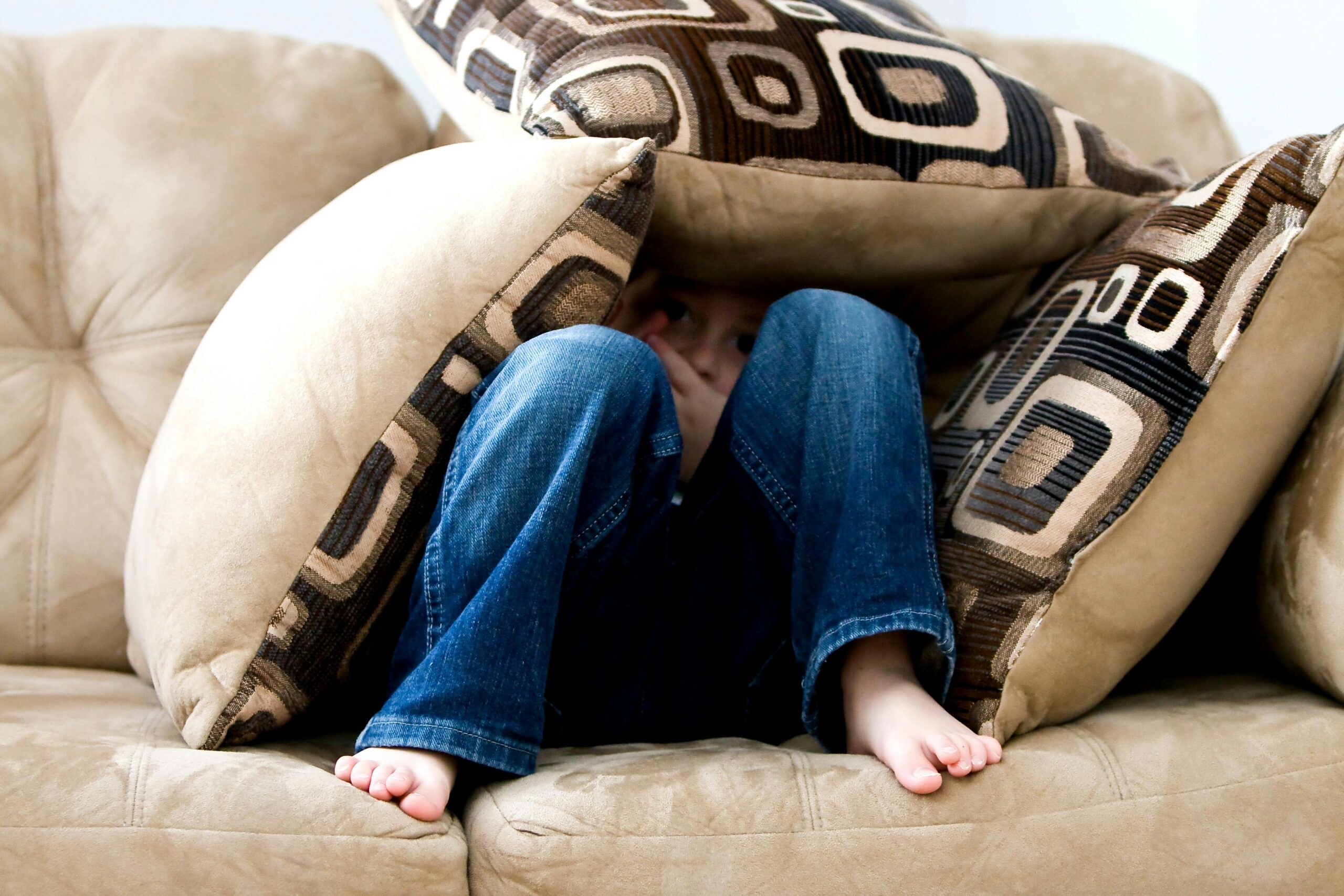
How to Get Cat pee smell Out of Couch?
How to Clean Dirty Smelly Cat Pee Couch?
- Use a Cat Odor Remover Spray: You can purchase a cat odor remover spray from a pet store or online. Spray the affected area of the couch with the solution and let it sit for 10-15 minutes. Then, blot the area with a clean cloth to remove any excess moisture.
- Use White Vinegar and Warm Water: Mix equal parts white vinegar and warm water in a spray bottle. Spray the solution liberally onto the affected area of the couch, making sure to saturate it with your solution. Let it sit for 30 minutes, then blot the area with a clean cloth to remove any excess moisture.
- Use Baking Soda: Sprinkle baking soda over the affected area of the couch and let it sit for 15-20 minutes. Then, vacuum up the baking soda using a vacuum cleaner with an upholstery attachment.
- Use Enzyme-Based Cleaners: Enzyme-based cleaners are commonly used to eliminate odors and pet stains from mattresses, carpets, linens, and couches. Make sure that your cat is nowhere near the couch during the cleaning process.
- Call a Professional Cleaner: If none of these methods work, you can call a professional cleaner to remove the smell from your couch.
Can I use hydrogen peroxide instead of enzyme-based cleaners?
If you don’t have an enzyme-based cleaner, you can use hydrogen peroxide to remove the smell of cat urine from your couch. However, hydrogen peroxide is not an enzyme cleaner itself. You can combine hydrogen peroxide with enzymes to make an effective cleaning solution. You can also use hydrogen peroxide for laundry as a substitute for commercial oxygen-based bleaches.
If you want to make your own enzymatic cleaner, you can use kitchen scraps and water to create a DIY enzymatic cleaner spray. This type of cleanser is safe to use around your pets and children and lifts dog urine and cat pee better than a commercial cleaner. There are many recipes to choose from, and creating a concoction of your own means knowing that every ingredient is non-toxic. If you’ve had problems with your pets peeing in the house and leaving behind a sour urine smell, try a homemade enzyme cleaner from this list.
How to trained my cat not pee on couch?
If you want to train your cat not to pee on the couch, here are some tips that might help:
- Clean the Couch Thoroughly: Before you start training your cat, make sure to clean the couch thoroughly with an enzyme-based cleaner to remove any residual urine smell.
- Provide a Litter Box: Make sure that your cat has access to a clean litter box at all times. The litter box should be in a quiet and private location, away from any distractions.
- Reward Good Behavior: Whenever your cat uses the litter box instead of the couch, reward them with treats or praise.
- Discourage Bad Behavior: If you catch your cat peeing on the couch, make a loud noise or clap your hands to startle them. Then, gently pick them up and place them in the litter box.
- Be Patient: Training your cat not to pee on the couch can take time and patience. Be consistent with your training and reward good behavior.
How can I reduce my cat’s stress levels?
If you want to reduce your cat’s stress levels, here are some tips that might help:
- Reduce Environmental Stress: Cats are sensitive to changes in their environment. You can reduce environmental stress by providing your cat with a quiet and private space, away from any distractions. You can also provide your cat with plenty of safe places in the home, such as a cardboard box or a tall tower.
- Reduce Psychological Stress: Cats can experience psychological stress due to changes in their routine or environment. You can reduce psychological stress by establishing a routine and sticking to it. You can also provide your cat with plenty of stimulation, such as toys and scratching posts.
- Reduce Physical Stress: Cats can experience physical stress due to loud noises or sudden movements. You can reduce physical stress by keeping radios, televisions, and voices in your home at a reasonable level. You can also play classical music specifically composed for cats and/or purring sounds to calm them down.
- Be Patient: Reducing your cat’s stress levels can take time and patience. Be consistent with your efforts and reward good behavior.
How can I trained my cat to use litter box?
If you want to train your cat to use the litter box, here are some tips that might help:
- Clean the Litter Box Regularly: Cats are clean animals and prefer a clean litter box. Make sure to scoop out the waste and clumps daily and replace the litter once a week.
- Choose the Right Litter Box: Choose a litter box that is large enough for your cat to move around in and has low sides so that your cat can easily get in and out of it.
- Choose the Right Litter: Most cats prefer unscented, fine-grained litter. Avoid using scented litter or litter with large grains, as these can be uncomfortable for your cat.
- Place the Litter Box in a Quiet Location: Place the litter box in a quiet location that is easily accessible to your cat. Avoid placing it near their food or water bowls.
- Reward Good Behavior: Whenever your cat uses the litter box, reward them with treats or praise.
- Discourage Bad Behavior: If you catch your cat peeing outside of the litter box, make a loud noise or clap your hands to startle them. Then, gently pick them up and place them in the litter box.
- Be Patient: Training your cat to use the litter box can take time and patience. Be consistent with your training and reward good behavior.
What type of litter is best for cats?
There are many types of cat litter available in the market, and the best one for your cat depends on your cat’s preferences and your lifestyle. Here are some of the most popular types of cat litter:
- Clay litter: This is the most common type of litter and is made from bentonite clay. It is affordable, easy to find, and absorbs moisture well. However, it can be dusty and may not be environmentally friendly.
- Silica gel litter: This type of litter is made from silica gel beads that absorb moisture and odors. It is low-dust, lightweight, and long-lasting. However, it can be expensive and may not be biodegradable.
- Biodegradable litter: This type of litter is made from natural materials such as corn, wheat, or recycled paper. It is eco-friendly, low-dust, and can be flushed down the toilet in some cases. However, it can be more expensive than other types of litter.
- Crystal litter: This type of litter is made from silica gel crystals that absorb moisture and odors. It is low-dust, lightweight, and long-lasting. However, it can be expensive and may not be biodegradable.
- Wood pellet litter: This type of litter is made from compressed sawdust or wood shavings. It is eco-friendly, low-dust, and can be flushed down the toilet in some cases. However, it may not absorb moisture as well as other types of litter.
What are some common mistakes when using a litter box?
Here are some common mistakes that cat owners make when it comes to litter boxes:
- Not cleaning the litter box frequently enough: Cats are clean animals and prefer a clean litter box. If the litter box is not cleaned frequently, your cat may avoid using it.
- Using the wrong type of litter: Some cats have a preference for a certain type of litter over others. You may need to try a few different types before finding the one that works best for your cat.
- Not providing enough litter boxes: The general rule of thumb is to have one more litter box than the number of cats in your household. For example, if you have two cats, you should have three litter boxes.
- Placing the litter box in an undesirable location: Cats prefer a quiet and private location for their litter box. Avoid placing it near their food and water bowls or in a high-traffic area.
- Choosing the wrong size or type of litter box: The size and type of litter box you choose can make a big difference in whether your cat uses it or not. Make sure the box is large enough for your cat to move around in and has low sides so that your cat can easily get in and out of it.
- Not scooping the litter box often enough: Scoop the litter box at least once a day, and more frequently if you have multiple cats.
- Not replacing the litter often enough: Litter should be replaced every two to three weeks, depending on how many cats you have and how frequently they use the box.
Conclusion
It’s important to note that you should always test any cleaning solution on an inconspicuous area of your couch before using it on the entire surface. This will help ensure that the solution doesn’t damage or discolor your couch.




